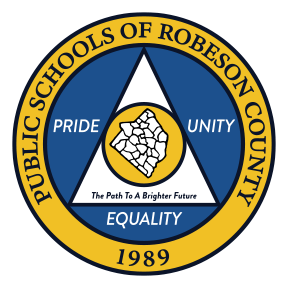LUMBERTON – Our academic challenge to every school last year for year one of our turnaround work was to create a positive baseline of growth.
The A-F school performance grades that schools received for the 2021-22 school year were affected by the formula used to determine those grades. Student performance on state tests far outweighs school growth. Eighty percent of the grade is based mostly on test scores; 20% is for growth, measured by a statistical model that evaluates schools’ progress across years.
Academic growth
We celebrate that 80.5% of our schools either met or exceeded growth compared to the 70% reflected in school growth across the state.
Academic growth measures the acceleration of achievement at a school by accounting for how much each individual student is learning over a year.
It considers improvement in scores even though a student has not reached the goal of Level 3. It also compares schools by considering whether each student’s progress is less or greater than expected for other students who are similar and who started off at the same score the previous year. This helps illustrate the importance of growth data in helping the district make decisions.
There is an ongoing conversation among superintendents and principals to change the formula to a 50-50 weight.
“We all recognize that schools are about more than test scores and that a test score should never define the quality of students and schools. There are more indicators that effectively represent a school’s success,” said Cindy Lewis, director of PSRC Testing and Accountability.
School, district performance grades
Even as most schools achieved at least expected growth, the A-F performance grades of many schools were depressed by lower-than-usual percentages of students earning a score of grade-level proficient. With a weighting of 80% on the test scores and other achievement data, as expected, the school performance grades have shifted downward, consistent with the impact of the pandemic on state test scores.
Low-performing schools are those that receive a performance grade of D or F even though they met growth, which is an indicator of the problem with the formula. Approximately 20% of our students missed proficiency by one or two questions.
Low-performing districts are districts where the majority of schools received a performance grade and have been identified as low performing.
For the 2021-22 school year, 864 schools have been identified as low performing, up from 488 in 2018-19. The number of low-performing districts increased to 29 from eight in 2018-19. PSRC has been identified as a low-performing school district as in the past.
PSRC has been identified as a low-performing district due to 20 low-performing schools in the district, which is two less than the previous year. Twenty-nine out of 36 schools (excluding the Robeson County Career Center and Learning Acceleration Program) met or exceeded growth, while only seven schools did not meet growth.
The following schools met growth:
- Fairmont Middle School
- Fairgrove Elementary School
- L. Gilbert Carroll Middle School
- Long Branch Elementary School
- Lumberton Junior High School
- Lumberton Senior High School
- Orrum Middle School
- Parkton Elementary School
- Pembroke Elementary School
- Peterson Elementary School
- Piney Grove Elementary School
- Rex-Rennert Elementary School
- W.H. Knuckles Elementary School
- South Robeson Middle School
- Southside-Ashpole Elementary School
The following schools exceeded growth:
- East Robeson Primary School
- Littlefield Middle School
- Magnolia Elementary School
- Oxendine Elementary School
- Pembroke Middle School
- Prospect Elementary School
- PSRC Early College at RCC
- Rowland-Norment Elementary School
- St. Pauls Elementary School
- St. Pauls Middle School
- St. Pauls High School
- Tanglewood Elementary School
- Union Chapel Elementary School
- Union Elementary School
Looking ahead
The Public Schools of Robeson County Board of Education took bold action this year to adopt a new reading and math curriculum to increase student proficiency. In addition, schools added an average of 15 minutes of instructional time to each day, which equates to 45 hours (seven and a half instructional days).

